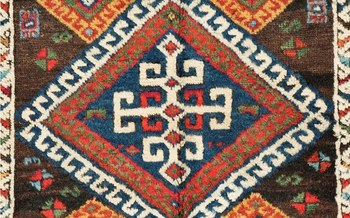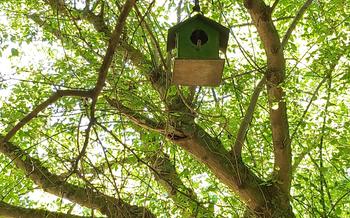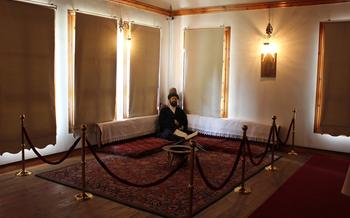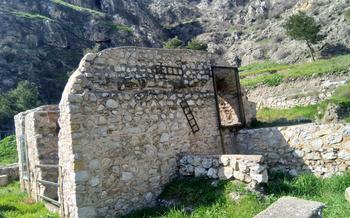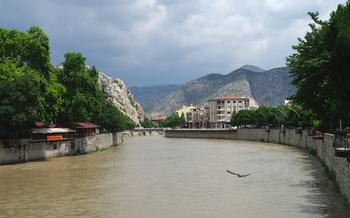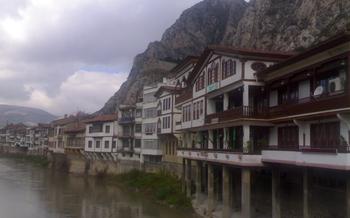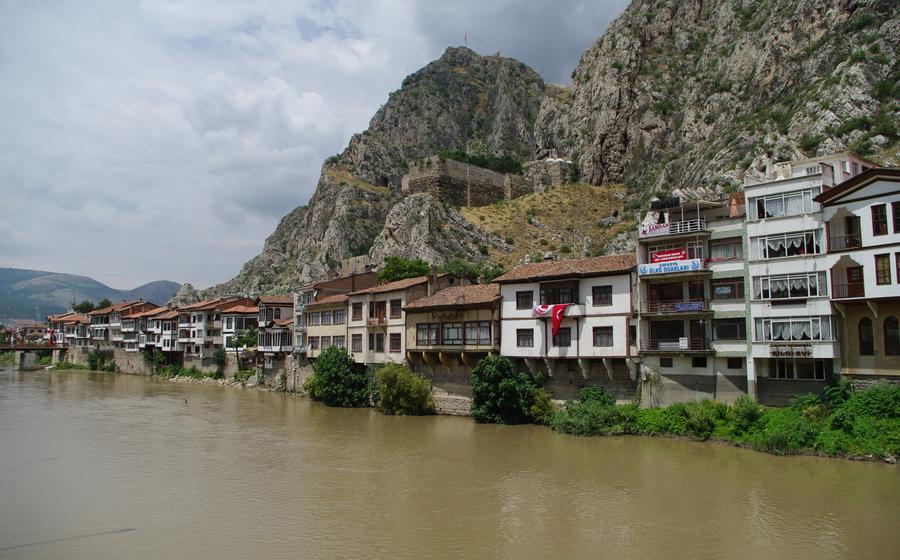
Alpaslan Museum and Cultural Center
- History of the Alpaslan Museum and Cultural Center:
- Collections and Exhibits
- Interactive Displays and Technology
- Cultural and Educational Programs
- Guided Tours and Audio Guides
- Accessibility and Amenities
- Hours of Operation and Admission Fees:
- Location and Transportation
- Visitor Reviews and Ratings
- Safety and Security Measures
- Local Culture and Traditions
- Photography and Social Media
- Restaurants and Dining Options
- Souvenirs and Shopping
History of the Alpaslan Museum and Cultural Center:
The Alpaslan Museum and Cultural Center, proudly nestled in the heart of Amasya, Turkey, stands as a testament to the rich historical legacy of the region. Established in 1995, the museum pays homage to the legendary Alparslan, the second Sultan of the Great Seljuk Empire, who played a pivotal role in shaping the course of Turkish history.
The museum finds its home in the historic Çakırbey Mansion, a magnificent architectural masterpiece dating back to the 19th century. Built by Çakırbey, a prominent figure in the Ottoman era, the mansion boasts intricate carvings, elegant designs, and a unique blend of traditional and modern architectural elements. The choice of this building as the museum's location serves as a symbolic representation of the convergence of history and culture that the institution embodies.
The Alpaslan Museum and Cultural Center stands as a beacon of cultural heritage, connecting the present with the past and preserving the legacy of a remarkable historical figure. Its significance extends beyond its walls, contributing to the vibrancy and richness of the cultural landscape of Amasya and the broader region.
Collections and Exhibits
The Alpaslan Museum and Cultural Center houses a diverse collection of artifacts and exhibits that provide a glimpse into the region's rich history and cultural heritage. Highlights of the collection include rare manuscripts, illuminated Qur'ans, and intricately decorated pottery dating back to the Seljuk period. Visitors can also admire a collection of traditional costumes, jewelry, and household objects that offer insights into the daily lives of the people who lived in this region centuries ago.
Thematic sections within the museum focus on specific aspects of the region's history and culture. One section is dedicated to the life and achievements of Alpaslan, the renowned Seljuk ruler who conquered Anatolia and established the Sultanate of Rum. Another section showcases the region's role as a crossroads of civilizations, with exhibits on the various ethnic and religious groups that have left their mark on Amasya.
The museum's exhibits are presented in a visually appealing and informative manner, with detailed descriptions and interactive displays that enhance the visitor experience. Visitors can learn about the historical significance of each artifact and gain a deeper understanding of the region's past.
Interactive Displays and Technology
The Alpaslan Museum and Cultural Center embraces technology to enhance the visitor experience and promote engagement with its exhibits. Interactive displays and multimedia presentations bring history to life, making it more accessible and captivating for visitors of all ages.
One of the highlights is the virtual reality (VR) experience, which allows visitors to immerse themselves in historical events and explore the region's rich past in a unique and immersive way. Through VR headsets, visitors can virtually step back in time and witness significant moments from the life of Alpaslan and the Seljuk Empire.
In addition to the VR experience, the museum features interactive touchscreens and digital kiosks that provide in-depth information about the exhibits. These interactive displays allow visitors to explore the museum's collection at their own pace, learning more about the artifacts, their historical significance, and the stories behind them.
The museum also utilizes augmented reality (AR) technology to create an engaging and interactive experience for visitors. Through AR, visitors can view 3D models of artifacts and historical sites, bringing them to life right before their eyes. This innovative technology adds another layer of depth and engagement to the museum's exhibits.
Furthermore, the museum offers interactive workshops and educational programs that allow visitors to participate in hands-on activities and learn more about the region's history and culture. These programs are designed to be both educational and enjoyable, providing a unique opportunity for visitors to engage with the museum's collection and gain a deeper understanding of Amasya's rich heritage.
Cultural and Educational Programs
The Alpaslan Museum and Cultural Center is dedicated to promoting cultural preservation and learning through various programs and initiatives. Visitors can participate in a range of cultural events, workshops, and educational programs designed to provide a deeper understanding of the history, traditions, and heritage of Amasya and the surrounding region. These programs aim to engage visitors of all ages and backgrounds, fostering a sense of appreciation for the local culture.
One of the highlights of the museum's cultural offerings is the traditional Turkish handicraft workshop. This hands-on experience allows visitors to learn about the art of Turkish carpet weaving, pottery, and other traditional crafts under the guidance of skilled artisans. Participants can try their hand at creating their own unique souvenirs, taking home a piece of Amasya's rich cultural heritage.
The museum also organizes regular lectures, seminars, and conferences on various historical and cultural topics. These events feature renowned scholars, experts, and historians who share their knowledge and insights on the region's past and present. Visitors can gain a deeper understanding of the significance of the artifacts on display and explore the broader context of Amasya's cultural and historical significance.
Additionally, the museum collaborates with local schools and educational institutions to offer educational programs for students of all ages. These programs include guided tours, interactive activities, and hands-on workshops that make learning about history and culture engaging and fun. The museum's goal is to inspire the next generation to appreciate and preserve their cultural heritage.
By participating in the Alpaslan Museum and Cultural Center's cultural and educational programs, visitors can not only gain a deeper understanding of the region's history and traditions but also contribute to the preservation and promotion of local culture. These programs provide a unique opportunity to connect with the community and create lasting memories of a visit to Amasya.
Guided Tours and Audio Guides
The Alpaslan Museum and Cultural Center offers guided tours in multiple languages, allowing visitors to delve deeper into the history and significance of the exhibits. These tours are led by knowledgeable and enthusiastic guides who bring the museum's collection to life. Visitors can book guided tours in advance or inquire about availability at the museum's information desk.
For those who prefer a more self-paced experience, audio guides are available in several languages. These guides offer detailed commentary and explanations of the exhibits, allowing visitors to explore the museum at their own pace and convenience. The audio guides can be rented from the museum's information desk and are easy to use, providing a personalized and immersive experience.
Accessibility and Amenities
The Alpaslan Museum and Cultural Center is committed to providing an accessible and enjoyable experience for all visitors. The museum is wheelchair accessible, with ramps and elevators throughout the building. Visitors with disabilities can also request assistance from the museum staff, who are trained to provide support and guidance.
Amenities within the museum include a café, where visitors can relax and enjoy refreshments, and a gift shop, where they can purchase souvenirs and mementos of their visit. The museum also has a cloakroom, where visitors can store their belongings while they explore the exhibits.
Parking is available near the museum, and there are designated spaces for visitors with disabilities. Visitors should be aware that the museum is located in a busy area, so it is advisable to arrive early or use public transportation to avoid traffic congestion.
Hours of Operation and Admission Fees:
The Alpaslan Museum and Cultural Center welcomes visitors during specific hours of operation. Plan your visit accordingly to make the most of your time exploring the exhibits. The museum typically opens its doors from Tuesday to Sunday, with varying hours depending on the season. During the summer months, from April to October, the museum operates from 9:00 AM to 7:00 PM. In the winter season, from November to March, the hours are slightly shorter, from 9:00 AM to 5:00 PM.
Admission fees are applicable for entry into the museum. Standard tickets for adults generally range between 10 to 20 Turkish Lira, while discounted rates may be available for students, seniors, or children. Keep an eye out for special events or promotions where admission might be free or reduced.
To avoid crowds and ensure a more relaxed visit, consider planning your trip during the weekdays or off-peak hours. This will allow you to fully immerse yourself in the exhibits without feeling rushed.
Location and Transportation
The Alpaslan Museum and Cultural Center is situated in the heart of Amasya, a city renowned for its rich history and natural beauty. The exact address of the museum is Alpaslan Caddesi, 19 Mayıs Mahallesi, 05100 Merkez/Amasya, Turkey. To reach the museum, visitors can conveniently utilize public transportation, as several bus lines have stops within walking distance. Alternatively, taxis are readily available and offer a comfortable and direct route to the museum's doorstep.
Once in Amasya, the museum's strategic location allows visitors to effortlessly combine their visit with other must-see attractions. The iconic Amasya Castle, perched atop a hill, offers breathtaking panoramic views of the city and is just a short stroll from the museum. Additionally, the picturesque Yalıboyu district, known for its charming Ottoman-era houses lining the riverfront, is a delightful area to explore and soak in the unique ambiance of Amasya.
Visitor Reviews and Ratings
The Alpaslan Museum and Cultural Center has received overwhelmingly positive feedback from previous visitors, earning a high rating and establishing a reputation as a must-see destination in Amasya. Visitors have praised the museum's well-curated exhibits, informative displays, and interactive features that make learning about history and culture engaging and enjoyable. The museum's dedication to preserving and showcasing local heritage has been widely appreciated, with many visitors expressing their admiration for the institution's role in promoting cultural understanding and appreciation.
One particular aspect that visitors have consistently highlighted is the friendly and knowledgeable staff at the museum. The guides are commended for their expertise and passion, which adds to the overall visitor experience. Whether through guided tours or self-exploration, visitors have found the staff to be helpful and enthusiastic in answering questions and providing insights into the exhibits.
While the museum has received mostly positive feedback, some visitors have expressed concerns about the occasional overcrowding during peak tourist seasons. To avoid the crowds, it is recommended to plan a visit during the off-season or on weekdays to fully enjoy the museum's offerings without feeling rushed.
Safety and Security Measures
The Alpaslan Museum and Cultural Center prioritizes the safety and security of its visitors and staff. Comprehensive security measures are in place to ensure a safe and enjoyable experience for all. Visitors are required to adhere to the following guidelines:
-
Security Checks: Upon entry, visitors may be subject to security checks, including bag inspections. Cooperation with security personnel is essential to maintain a secure environment.
-
Prohibited Items: To ensure the safety of all visitors, certain items are prohibited inside the museum. These include weapons, sharp objects, large bags, tripods, and any items deemed to be a potential security risk.
-
Emergency Preparedness: In case of an emergency, visitors are advised to remain calm and follow the instructions of museum staff. Emergency exits are clearly marked throughout the building, and staff members are trained to assist in evacuation procedures.
-
Personal Belongings: Visitors are responsible for the safety of their personal belongings. The museum recommends keeping valuables secure at all times and avoiding leaving personal items unattended.
By adhering to these safety measures, visitors can contribute to a safe and enjoyable environment for all while exploring the rich history and culture showcased at the Alpaslan Museum and Cultural Center.
Local Culture and Traditions
The Alpaslan Museum and Cultural Center is deeply rooted in the local culture and traditions of Amasya. The museum showcases the rich heritage of the region, preserving and promoting the unique identity of Amasya. Visitors can learn about the traditional arts, crafts, and customs of the local people through interactive exhibits and displays. The museum also hosts cultural events, workshops, and festivals throughout the year, providing opportunities for visitors to immerse themselves in the vibrant local culture. By visiting the Alpaslan Museum and Cultural Center, visitors not only gain insights into the region's history and heritage but also contribute to the preservation and promotion of local traditions.
Photography and Social Media
The Alpaslan Museum welcomes photography as a way for visitors to capture and share their experiences. However, there are a few guidelines to keep in mind to ensure a respectful and enjoyable visit for all.
Flash photography is not permitted, as it can damage the delicate artifacts and disturb other visitors. To capture the best shots, use natural light or a steady tripod.
When sharing photos online, please be mindful of the privacy of other visitors and avoid capturing recognizable faces without their consent. It's always best to ask permission if you're unsure.
Use relevant hashtags related to the museum and Amasya to connect with other travelers and share your experiences. Here are some suggestions: #AlpaslanMuseum, #Amasya, #TurkeyTravel, #MuseumPhotography.
By following these guidelines, you can help preserve the museum's treasures while creating lasting memories of your visit. Don't forget to tag the museum's official social media accounts for a chance to be featured!
Restaurants and Dining Options
When visiting the Alpaslan Museum and Cultural Center, you'll find yourself in the heart of Amasya, a city renowned for its culinary delights. After immersing yourself in history and culture, take a break to savor the flavors of traditional Turkish cuisine.
Right next to the museum, you'll find several charming restaurants offering a range of dining options. Indulge in the aromatic kebabs, freshly grilled on skewers and served with succulent vegetables. Don't miss the opportunity to try the local specialty, Amasya Çorbası, a hearty lamb and chickpea soup that warms the soul.
For a taste of authentic Turkish cuisine, head to one of the nearby restaurants serving traditional home-style dishes. Savor the flavors of yaprak sarma, delicate vine leaves stuffed with rice and herbs, or keşkek, a slow-cooked dish made from pounded wheat, meat, and yogurt.
Vegetarians will find plenty of options to satisfy their taste buds. Amasya is known for its fresh produce, and many restaurants offer delicious vegetable dishes. Try the güveç, a clay pot dish with seasonal vegetables slow-cooked in a rich tomato sauce, or the taze fasulye, a refreshing salad made with green beans, tomatoes, and onions.
To end your meal on a sweet note, don't miss the chance to try Amasya's famous tatlısı, a sweet pastry filled with nuts and honey. You can find these delicious treats in local bakeries or confectionery shops.
Whether you're looking for a quick bite or a leisurely dining experience, you'll find plenty of options near the Alpaslan Museum and Cultural Center. Embrace the opportunity to taste the flavors of Amasya and indulge in the culinary delights of this vibrant city.
Souvenirs and Shopping
The Alpaslan Museum and Cultural Center boasts a well-stocked gift shop where visitors can purchase a variety of souvenirs to commemorate their visit. From traditional Turkish handicrafts to replicas of artifacts from the museum's collection, there's something for every taste and budget. Be sure to look out for unique items such as hand-painted ceramics, intricate jewelry, and woven textiles that showcase the region's rich cultural heritage.
Amasya is also home to several charming shops and markets where visitors can find a treasure trove of souvenirs and local products. The traditional bazaar, located in the heart of the city, is a great place to haggle for bargains on everything from spices and dried fruits to carpets and souvenirs. For a more upscale shopping experience, head to the modern shopping malls, which offer a wide range of international brands and boutiques.
When shopping in Amasya, be sure to try your hand at bargaining. It's a common practice in Turkey, and you can often get a good deal if you're willing to haggle politely. Just be respectful and don't be afraid to walk away if you're not satisfied with the price.
If you're looking for a truly unique souvenir, consider purchasing a traditional Turkish carpet or kilim. These hand-woven textiles are renowned for their intricate designs and vibrant colors. You can find a wide variety of carpets and kilims in Amasya's shops and markets, ranging from small decorative pieces to large room-sized rugs.
Whether you're looking for a small token of your visit or a special gift for a loved one, you're sure to find something to your liking in Amasya's shops and markets. So be sure to set aside some time to explore and discover the many treasures that this historic city has to offer.

